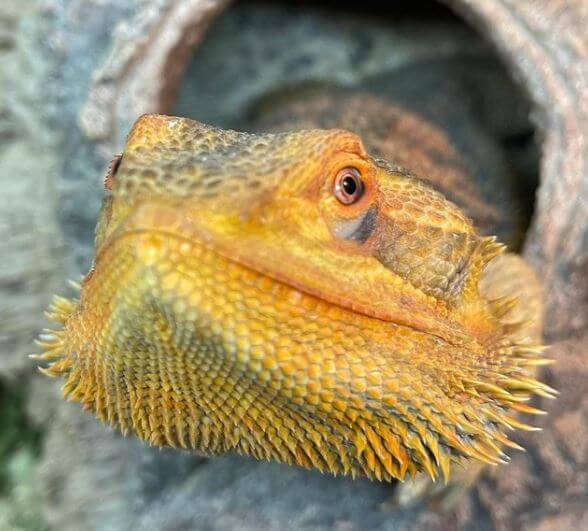How to lower humidity in bearded dragon tank
How to lower humidity in bearded dragon tank: Proper humidity levels play a crucial role in maintaining the health and well-being of our scaly companions, such as bearded dragons. These fascinating reptiles, native to the arid regions of Australia, thrive in environments with relatively low humidity.
As responsible reptile keepers, it is vital for us to understand the significance of maintaining optimal humidity levels within their enclosures. Bearded dragons rely on their environment to regulate their body temperature since they are ectothermic creatures.
Inadequate control over humidity levels can have detrimental effects on their overall health and even lead to severe complications. As such, monitoring and managing humidity becomes an essential aspect of providing a suitable captive habitat for these remarkable creatures.
Potential Risks and Health Issues Associated with High Humidity Levels
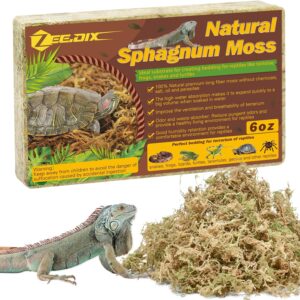 Ambient moisture levels that exceed the recommended range for bearded dragons (30-40%) can pose significant risks to their well-being. One of the primary concerns associated with high humidity is respiratory infections. Bearded dragons are susceptible to respiratory ailments when exposed to prolonged periods of excessive moisture which can lead to difficulty breathing, wheezing, or even pneumonia.
Ambient moisture levels that exceed the recommended range for bearded dragons (30-40%) can pose significant risks to their well-being. One of the primary concerns associated with high humidity is respiratory infections. Bearded dragons are susceptible to respiratory ailments when exposed to prolonged periods of excessive moisture which can lead to difficulty breathing, wheezing, or even pneumonia.
Moreover, elevated humidity can create a breeding ground for harmful bacteria and fungi. These microorganisms thrive in damp conditions and can cause skin infections or other diseases if they come into contact with a bearded dragon’s delicate skin.
Furthermore, high humidity levels may contribute to poor shedding in bearded dragons by preventing the natural process of skin sloughing off smoothly. This can result in retained shed or incomplete shedding episodes which may lead to discomfort and potential injury if not addressed promptly.
Understanding the implications of improper humidity levels is paramount when it comes to providing a suitable environment for our bearded dragon companions. By comprehending both the importance of maintaining proper humidity levels and the potential health risks associated with high humidity, we can take proactive measures to ensure our scaly friends thrive in a healthy and comfortable habitat.
Detailed explanation of the recommended humidity range for bearded dragons (30-40%)
Bearded dragons, as desert-dwelling reptiles, require a specific humidity range to thrive in captivity. The recommended humidity level for these amazing creatures typically falls between 30% and 40%. This range allows them to maintain their physiological functions effectively while ensuring their skin and respiratory health.
Humidity refers to the amount of moisture present in the air. In the wild, bearded dragons are accustomed to arid environments with low humidity levels.
Exposing them to high levels of moisture can lead to adverse effects on their health. High humidity can cause respiratory issues, skin infections, shedding problems, and even impact their growth and appetite.
Conversely, excessively low humidity levels can also be detrimental. If the air becomes too dry, it may lead to dehydration and desiccation of the bearded dragon’s skin.
Dryness can cause discomfort and hinder proper shedding processes as well. Therefore, maintaining an adequate balance within this recommended range is crucial for their overall well-being.
Discussion on why maintaining proper humidity is crucial for their overall well-being
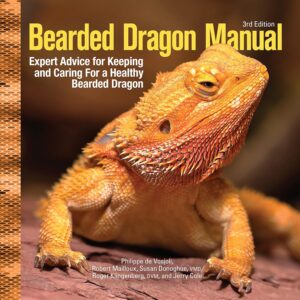 Maintaining proper humidity levels is vital for ensuring the overall well-being of your bearded dragon companion. Humidity plays a significant role in several aspects of their health:
Maintaining proper humidity levels is vital for ensuring the overall well-being of your bearded dragon companion. Humidity plays a significant role in several aspects of their health:
Respiratory Health: Bearded dragons have delicate respiratory systems that are designed for arid environments. High humidity increases moisture in the air they breathe, making it harder for them to properly exchange oxygen and carbon dioxide through their lungs.
This can potentially lead to respiratory infections or other breathing difficulties. 2) Skin Health: Proper hydration is essential for maintaining healthy skin in bearded dragons.
Adequate humidity helps prevent dryness and cracking, which can lead to discomfort or even skin infections if left untreated. 3) Shedding: Bearded dragons periodically shed their old skin to accommodate their growth.
Maintaining the right humidity levels assists in this process by softening the old skin and making it easier for them to shed. Insufficient humidity can result in incomplete shedding, leading to retained shed and potential complications.
Temperature Regulation: Bearded dragons thermoregulate by basking under heat sources, such as basking lamps or UVB bulbs. Humidity affects heat retention, and maintaining appropriate humidity levels aids in preserving thermal gradients within the enclosure.
This ensures that your bearded dragon can properly regulate its body temperature, which is crucial for their overall metabolism and digestion. By understanding the importance of maintaining proper humidity levels for your bearded dragon, you can create an environment that promotes their health and longevity.
Factors Influencing Humidity Levels in a Bearded Dragon Tank
Substrate Type and Moisture Retention Capacity
The choice of substrate in a bearded dragon tank can greatly impact the humidity levels within the enclosure. Certain substrates have higher moisture retention capacities, which can lead to increased humidity levels. For example, coconut coir or sphagnum moss are known to retain moisture effectively and can elevate humidity if used as the primary substrate.
On the other hand, using substrates with low moisture retention such as reptile carpet or paper towels can help to reduce humidity levels. It is essential to consider the depth of the substrate as well.
A thick layer of substrate will retain more moisture than a thin layer, potentially raising humidity. Therefore, it is advisable to keep the substrate depth minimal while ensuring it provides adequate cushioning for your bearded dragon.
Water Sources within the Tank (e.g., Water Bowls, Misting Systems)
Water sources within the bearded dragon tank can also contribute to elevated humidity levels. Water bowls should be appropriately sized and strategically placed to minimize evaporation.
A smaller water bowl will have less surface area exposed to air, reducing evaporation rates and limiting potential increases in humidity. Misting systems are commonly used in reptile enclosures to provide hydration and simulate natural environmental conditions for bearded dragons.
While they offer benefits such as promoting drinking behavior and maintaining proper skin hydration for your pet, misting systems can also contribute significantly to increased humidity levels if used excessively or without considering air circulation. Careful consideration should be given when implementing misting systems or using any other water source within the tank to strike a balance between providing adequate hydration for your bearded dragon while minimizing excessive water vapor accumulation.
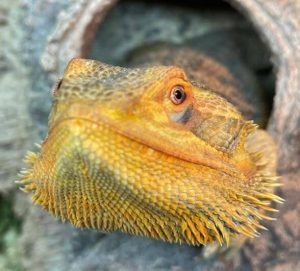
Ambient Room Humidity and Ventilation
The ambient room humidity where your bearded dragon tank is located can impact the humidity levels within the enclosure. If the room has high humidity levels, it will be more challenging to maintain lower levels within the tank. Therefore, consider placing the enclosure in a room with lower ambient humidity or take measures to reduce overall room humidity, such as using dehumidifiers or ensuring proper ventilation throughout the area.
Additionally, ventilation within the bearded dragon tank itself plays a crucial role in regulating humidity. Insufficient airflow can lead to stagnant air and moisture buildup.
Evaluate your tank’s current ventilation system, including mesh screen lids or air vents, and ensure there is sufficient exchange of air to prevent excessive humidity accumulation. By considering these factors – substrate type and moisture retention capacity, water sources within the tank, ambient room humidity, and ventilation – you can effectively manage and control humidity levels in your bearded dragon’s habitat for their optimal health and well-being.
Strategies to Lower Humidity Levels in a Bearded Dragon Tank
Adjusting Substrate Type and Depth:
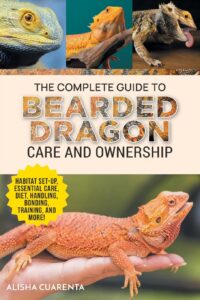 One of the first steps towards lowering humidity in a bearded dragon tank is to carefully select the appropriate substrate type. Opting for substrates with low moisture retention, such as reptile carpet or paper towels, can significantly help reduce humidity levels. These materials are designed to absorb minimal moisture, preventing excess humidity buildup within the tank.
One of the first steps towards lowering humidity in a bearded dragon tank is to carefully select the appropriate substrate type. Opting for substrates with low moisture retention, such as reptile carpet or paper towels, can significantly help reduce humidity levels. These materials are designed to absorb minimal moisture, preventing excess humidity buildup within the tank.
Reptile carpet is an excellent choice as it allows for easy spot cleaning and can be washed when necessary. Paper towels, on the other hand, offer convenience as they can be easily replaced if soiled or wet.
In addition to selecting suitable substrates, adjusting the depth of the substrate can also play a crucial role in reducing humidity levels. By minimizing the depth of the substrate layer, you limit its capacity for moisture absorption and retention.
This practice ensures that there is less opportunity for excessive humidity to accumulate within the tank. However, it’s important not to compromise your bearded dragon’s comfort and natural behaviors when reducing substrate depth; always maintain a sufficient layer that allows them to burrow and exhibit their natural instincts.
Controlling Water Sources:
Another effective strategy for lowering humidity in a bearded dragon tank involves controlling water sources within the enclosure. To prevent excessive evaporation and subsequent increase in humidity levels, careful consideration should be given to water bowl placement and size. Placing water bowls away from heat sources will minimize evaporation rates while still providing access to hydration for your pet.
Moreover, selecting an appropriately sized water bowl is key—a smaller bowl will hold less water and thus evaporate at a slower rate compared to larger bowls. This simple adjustment can help regulate moisture levels within the enclosure.
Additionally, limiting misting frequency or opting for alternative methods like targeted spraying rather than misting the entire tank can help control humidity. Misting should be done sparingly, as excess moisture in the tank can lead to dampness and increased humidity levels.
Enhancing Ventilation:
Evaluating the current ventilation setup within the bearded dragon tank is essential for effective humidity control. Mesh screen lids and air vents are common features that allow for some airflow, but they may not always provide sufficient ventilation to lower humidity levels adequately. To enhance ventilation, consider modifying or improving these features.
You can increase the number or size of air vents to allow for better air exchange. Additionally, incorporating a fan or placing the tank in a well-ventilated area can help promote airflow and reduce moisture retention.
Remember that proper ventilation should strike a balance between keeping humidity levels in check while still maintaining an appropriate temperature gradient within the tank. High-quality airflow prevents stagnant moisture buildup while ensuring your bearded dragon’s habitat remains comfortable and conducive to their health and well-being.
By implementing these strategies—adjusting substrate type and depth, controlling water sources, and enhancing ventilation—you can effectively lower humidity levels in your bearded dragon’s tank. This will create an environment that promotes optimal health for your beloved reptile friend while mitigating potential risks associated with excessive humidity.
To Sum Up How to Lower Humidity in Bearded Dragon Tank:
Effectively managing humidity levels in a bearded dragon tank is crucial for their health and well-being. By implementing measures such as adjusting substrate type and depth, controlling water sources, enhancing ventilation, and regulating temperature gradients, you can successfully lower humidity levels within their enclosure.
Remember that every decision made when creating an ideal habitat for your beloved reptile plays a vital role in their overall comfort and health. With careful consideration of all factors influencing humidity levels, you can create an environment where your bearded dragon thrives while keeping them safe from potential health issues associated with high humidity.
By actively monitoring and implementing these measures regularly, you will provide your bearded dragon with an environment that replicates their natural habitat while ensuring optimal living conditions. Your effort will not only result in lowered humidity but also contribute to the long-term happiness and vitality of your scaly companion.
Further Reading:
- Carolina Custom Cages Terrarium Review
- 8 Best Basking Rocks for Beardie: What Is the Best Choice?
- 10 Best Thermometers for Beardie: How to Choose the Best One?
- 5 Best Beardie Lighting Setups for Beardie Lovers
- 9 Best Heat Lamps for Beardie: Natural Habitat Provided

